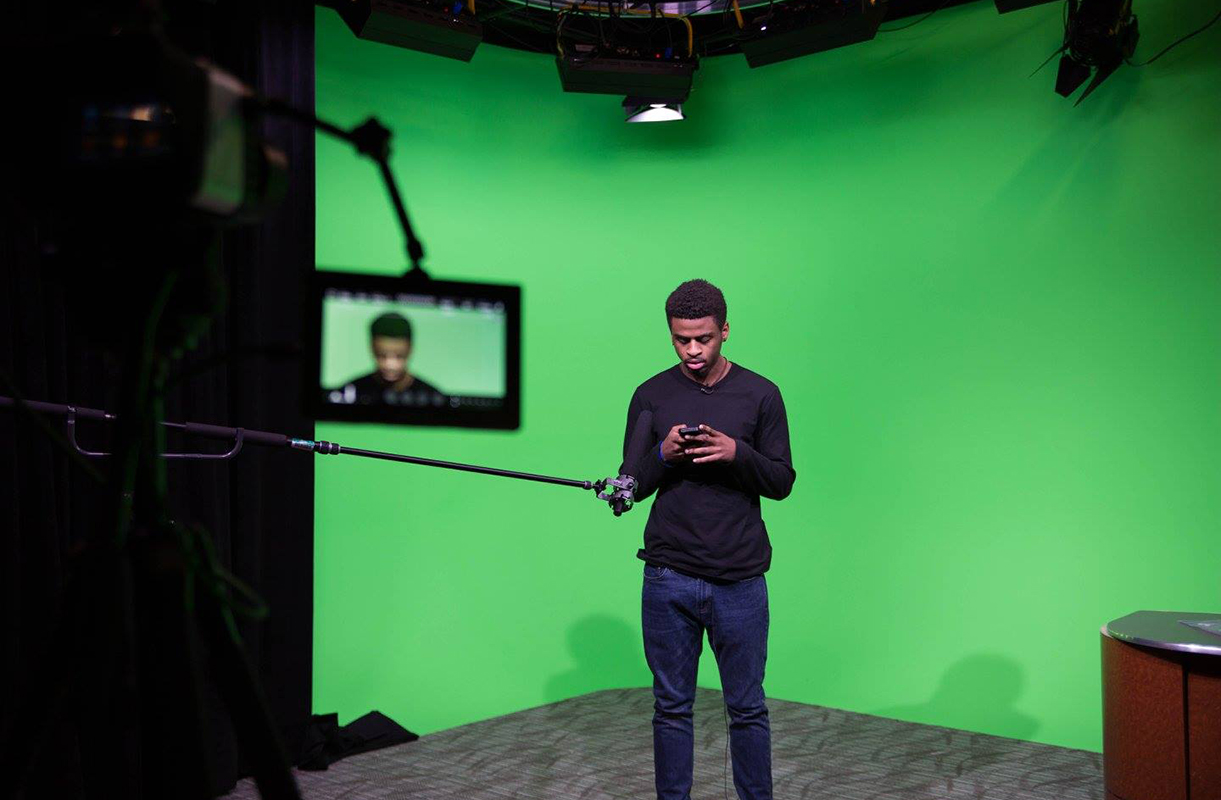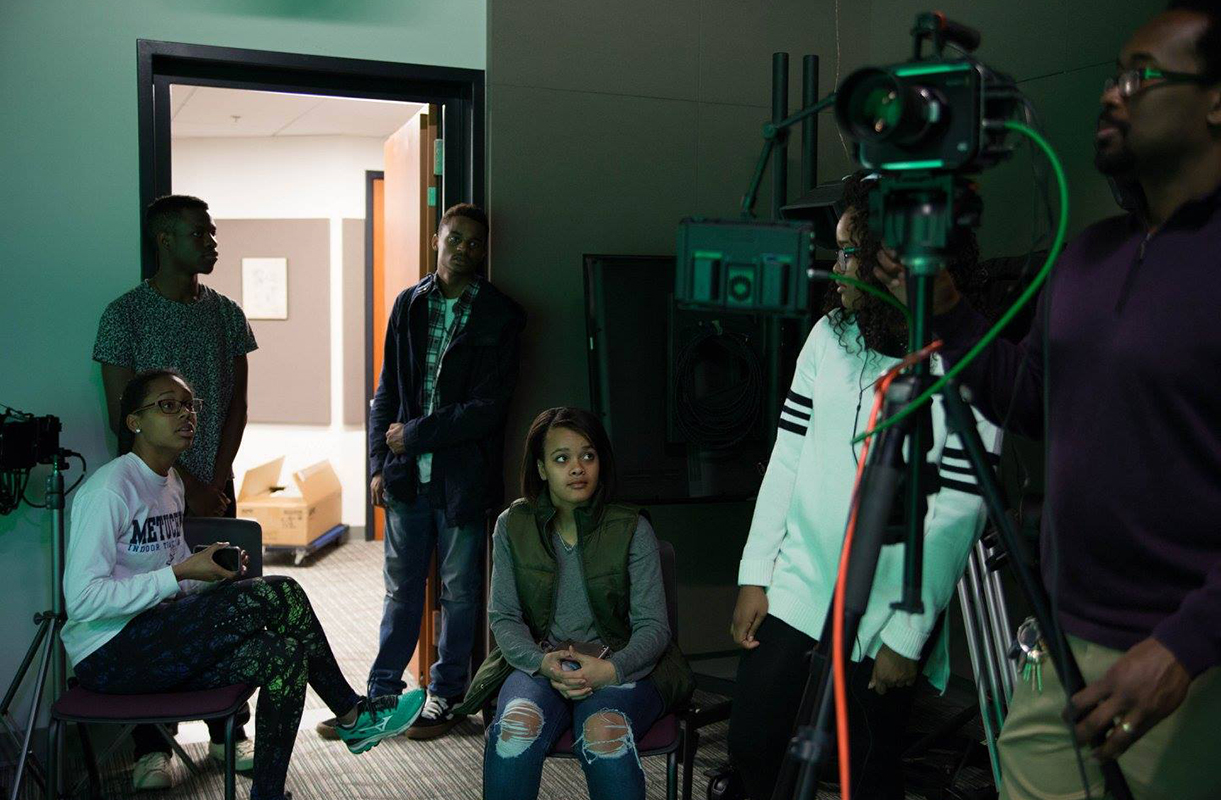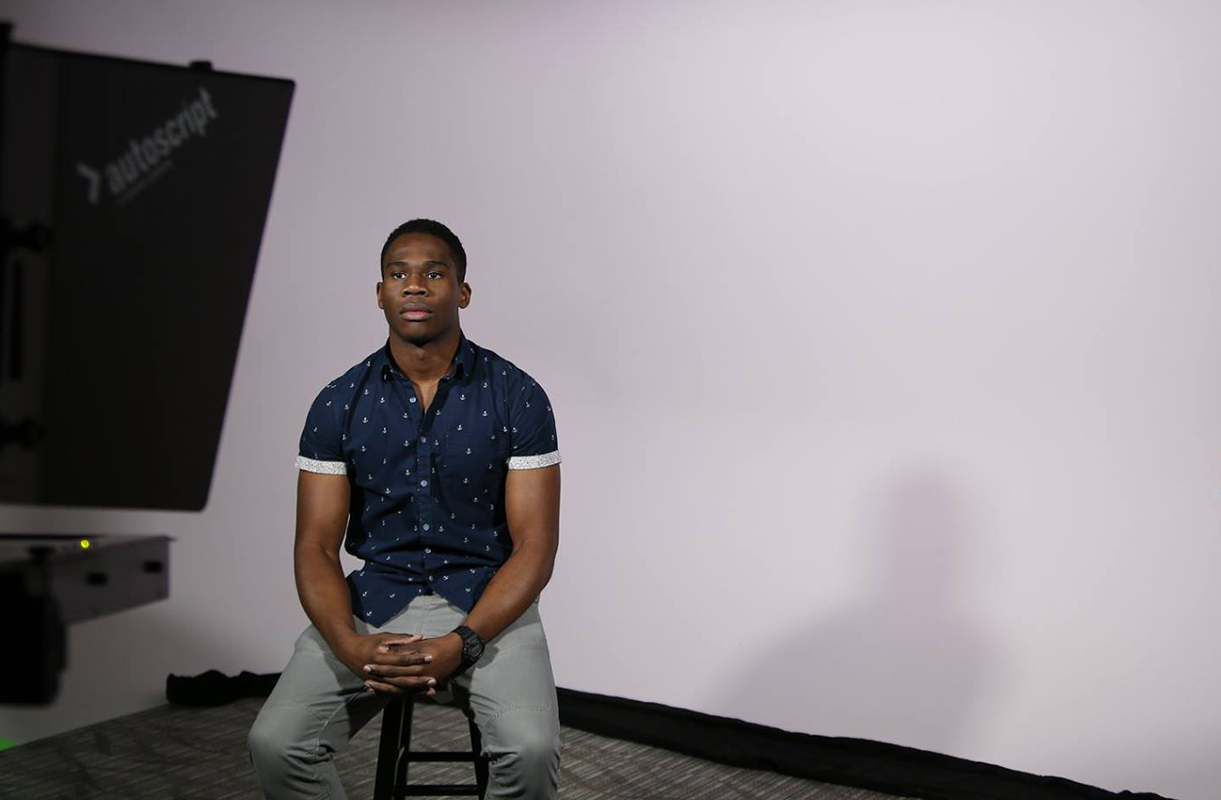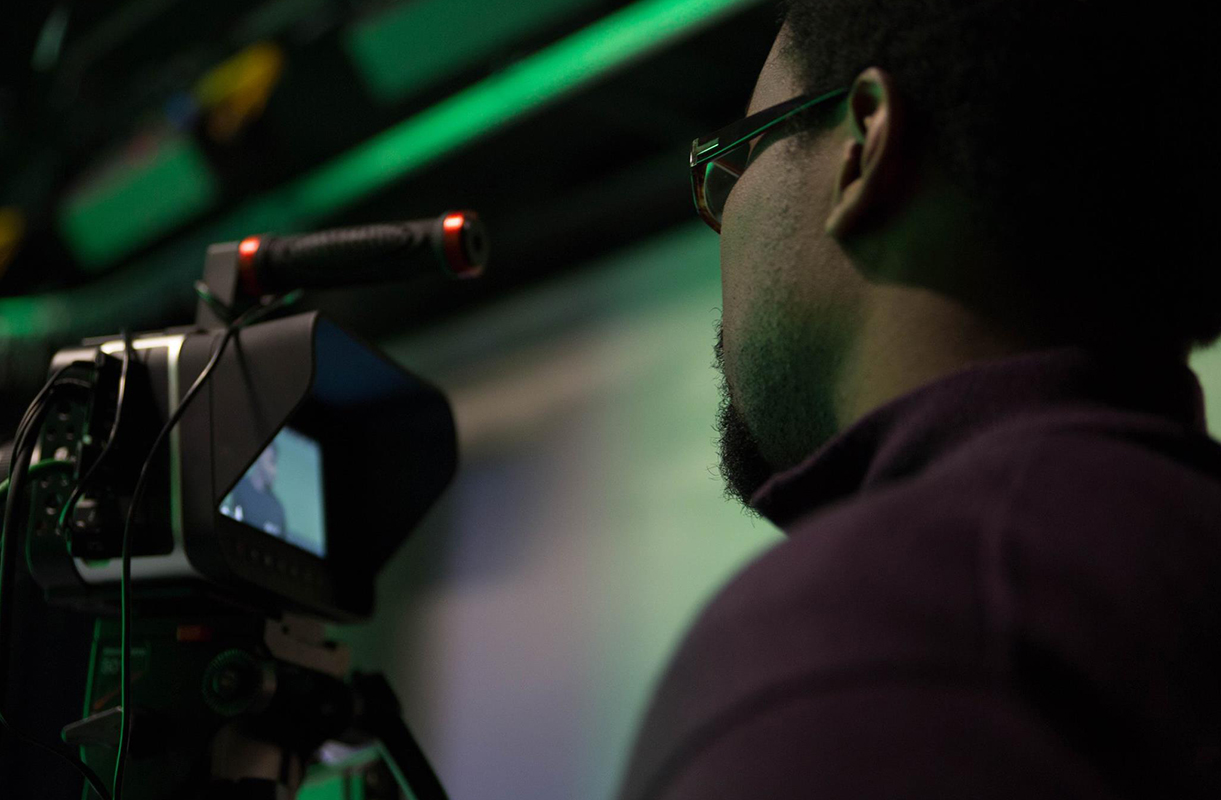Ten years later, the sky’s the limit
GreyComm Studios offers real-world experiences
George P. Matysek, Jr., ’94
How do you prepare students for the ever-changing world of digital media production, while embracing the traditional television broadcast and news gathering techniques?
That was the challenge facing H. Jay Dunmore, GreyComm TV studio manager, who was hired for this role in 2007.
“We had to get everyone interested and involved in something that was essentially nothing,” said Stephen Gallagher, ’11, who volunteered to become president of the TV studio as a first-year student. Dunmore approved him for the position.

“We needed to have the patience to wait and become established,” remembered Gallagher, a Long Island native who brought experience in television broadcasting from his Catholic high school.
Eric Strand ’11, vice president during this time, recalled GreyComm as a “great opportunity for Loyola communication students to help create a brand and identity while learning the tech side of video production.”
Today Strand is a producer at Overabove LLC, a media production group in New England.
Tenacity paid off
In April 2009, WLOY-TV became GreyComm Studios, a thriving and growing student-run media organization under the auspices of Loyola’s communication department.
A staff of about three grew to 100 by the end of Gallagher’s four-year tenure as president.
Students succeeded in producing and recruiting talent for a wide assortment of popular programs, such as broadcasts on cooking, dating, crime, rock bands, and Christian values in movies, along with a late-night show and live-streamed talent show.

The TV studio began posting content—much of it created in a video production class—on outside video-sharing websites. Students even covered live events such as sports games and Loyola's annual Festival of Lessons and Carols.
Gallagher, a communication major who now works in Los Angeles as an entertainment lawyer, credits much of GreyComm’s ongoing success to Dunmore’s boundless faith in students.
“I’ve never seen someone so invested in the students,” Gallagher said. “He gives them real-world experience.”
‘No limits on creativity’
Dunmore said GreyComm is geared to students interested in video production, graphic design, public relations, broadcasting, and evolving technology. And it is open to students of all disciplines.
The foundation for GreyComm had been laid in 2001, when Loyola first began television broadcasting. Three students and Father Michael Braden, S.J., later petitioned then-President Father Harold Ridley, S.J., to build a state-of-the-art facility that could house a first-ever 24-hour television network and communications laboratory.

Fr. Ridley approved, and WLOY began broadcasting in the new facility in 2003. The groundwork for the new facility was made in 2002; a temporary facility was established in the basement of Dorothy Day Hall.
While the network had great technology, it was short on staffing—until Dunmore, Gallagher, and a host of student leaders built it into GreyComm.
GreyComm participants, many of whom take communication courses, are trained in audio and video editing, how to use cameras, and the latest professional broadcast techniques. They come up with the ideas for broadcasts and have the opportunity for on-camera experience.
We have no limits on creativity. We have an environment where everyone can have a unique contribution.

Beairshelle Edmé, ’13, credits her four years working in GreyComm with helping develop skills she now relies on as a news anchor at FOX59 in Indianapolis. She started out at GreyComm as a video editor and eventually became a host of her own show and an anchor.
“At GreyComm, I learned the basics before going on-air,” she said, “and that was a solid base for the local news industry today, where multimedia journalists are expected to shoot video, edit, report, and perform digital and social media duties.”
GreyComm helped Edmé practice interview techniques, while also gaining experience as a floor director, photographer, and control-room director.

Jade Benson-Smith, a communication major and rising senior, serves as GreyComm’s current president. She began as a video editor and now focuses on filmmaking. She completed her first short film, a science fiction thriller called Dwindle, while active in GreyComm.
“It was a very extensive project,” Benson-Smith said. “I had a whole team helping me with casting, filming, and making special effects. I’m so proud of myself for doing it, because I never thought it was something I could accomplish while still an undergraduate.”
Benson-Smith, who worked on another short film called Tattooed, hopes to pursue a career in film production.
Building community
Gallagher said GreyComm helps promote a sense of community. Students from different circles come together to work on content, he said, and the productions are viewed by many different groups across Loyola and beyond.
Dunmore recalled the entire student body gathering in 2009 to watch a video made by GreyComm that celebrated Loyola’s name change from Loyola College in Maryland to Loyola University Maryland. It was one of GreyComm’s early successes, he said.

GreyComm’s most-watched video, with more than 56,000 views, is a 2014 interview with S.J. Tuohy, a Loyola student whose brother is former Baltimore Raven (and The Blind Side inspiration) Michael Oher.
As GreyComm celebrates its 10-year anniversary with a specially produced documentary and a series of alumni meetups in Los Angeles, New York, and Baltimore, Dunmore said the program is looking to give students even more hands-on experience.
“Starting this summer, we are moving GreyComm in the direction of a student business,” said Dunmore, noting that he envisions GreyComm students working with outside clients on multimedia projects like those GreyComm has produced for Loyola and nonprofit organizations.
“We have the skill and caliber of talent to do it.”
Dunmore hopes to lead more international study tours such as the one he spearheaded early this year to London, Newcastle, and Edinburgh, where students recorded content to develop into stories as part of a backpack travel production class.
He also envisions developing live-streaming partnerships with universities around the world.
"The sky’s the limit,” he said.